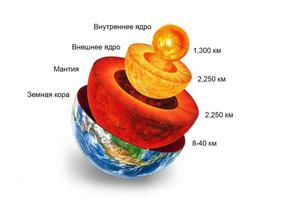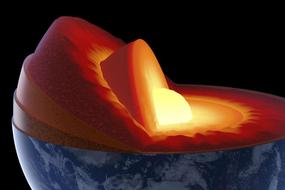A research team of physicists from NUST MISIS, the Ural Branch of RAS (Russia), Tel Aviv University (Israel), the University of Bayreuth (Germany), and Linkoping University (Sweden), have discovered a completely new explanation for a generally accepted physical hypothesis — the phase transition insulator metal — described by Sir Nevill Francis Mott in 1949. New and unexpected properties of materials discovered in the study will be in demand in microelectronics and geophysics as catalysts and sensors: the research results have been published in the prestigious international journal Physical Review X.
A truly breakthrough development is necessary to find a new explanation for a generally accepted physical hypothesis, and more importantly, to win a Nobel Prize. An international team of scientists from NUST MISIS, the Ural Branch of RAS (Russia), Tel Aviv University (Israel), the University of Bayreuth (Germany), and Linkoping University (Sweden) has managed to do just that however. We are talking about an amazing phenomenon that physicists first observed at the beginning of the 20th century. Iron oxide (hematite), an insulator that does not conduct electric current at a pressure of 1 million atmospheres, suddenly turned into a good conductor. Why is there a phase transition of matter from one state to another? Physicists had been struggling with the explanation of this phenomenon for over half a century when Sir Nevill Francis Mott won the Nobel Prize in 1977 for his discovery on the subject. What exactly did modern physicists not accept about Mott’s theory then?
Sir Nevill Francis Mott, an icon in modern physics, first described how the material is transformed from a dielectric to a conductor, and he received the Nobel Prize in 1977 for that explanation. Since then his scheme has been considered a classic and was required to be studied by all physicists. However, this year the research team has discovered a completely different scheme of phase-transition, which was called the Space-selective Mott transition.
The team worked with a material-insulator, hematite or iron oxide Fe2o3 (roughly speaking, it is a rust which doesn`t conduct electric current at all), and placed it in a diamond anvil and compressed it at super-pressures up to 100 gPa (up to 1 million atmospheres). Under such extreme external conditions, the hematite-insulator becomes a conductor, and a phase transition occurs.
Hematite is one of the classic examples of Mott`s dielectric. The description of physical properties of this compound is of great fundamental interest both for understanding the physics of various magnetic-structural transformations near the metallization of the system under pressure (in magnetic/electric fields, doping, etc.), and for geology (geochemistry and geophysics), as Fe2O3 is one of the most common compounds found in the Earth`s interior.
The main surprise of the research result is that TWO atomic-crystal sublattices occur simultaneously in one Fe2O3 crystal at super-pressures. In this case, the material has the characteristics of a metal (conductor) and a dielectric. There is a compound magnetic-structural transformation leading to the formation of two sublattices of iron with fundamentally different properties.
“As part of the study (theory and experiment) of the properties of the Fe2O3 compound under pressure, we have proposed a completely new explanation of Mott`s dielectric-metal phase transition. From the fundamental point of view, we have described a new class of phase transitions in compounds with strong correlations (this is a large class of materials, widely studied nowadays, including high-temperature superconductors based on copper or iron, as well as compounds with colossal magnetoresistance, ferroelectrics, magnets, etc.); in fact, a new state of matter characterized by both the properties of the metal and the dielectric has been described” said Ivan Leonov, Doctor of Physical & Mathematical Sciences, co-author of the research studies and a researcher at NUST MISIS.

Pic.1 In the normal state of the insulator, the hematite has a prismatic lattice, and at a pressure of 50 gPa it becomes a conductor, where two iron sublattices containing octahedra and prisms are observed.
The research results are important for understanding the physical processes in the Earth`s lower mantle. Additionally, the new state of matter’s described properties will have interesting potential usage in microelectronics to create innovative sensors and switches for the aircraft, space, and automotive industries.




